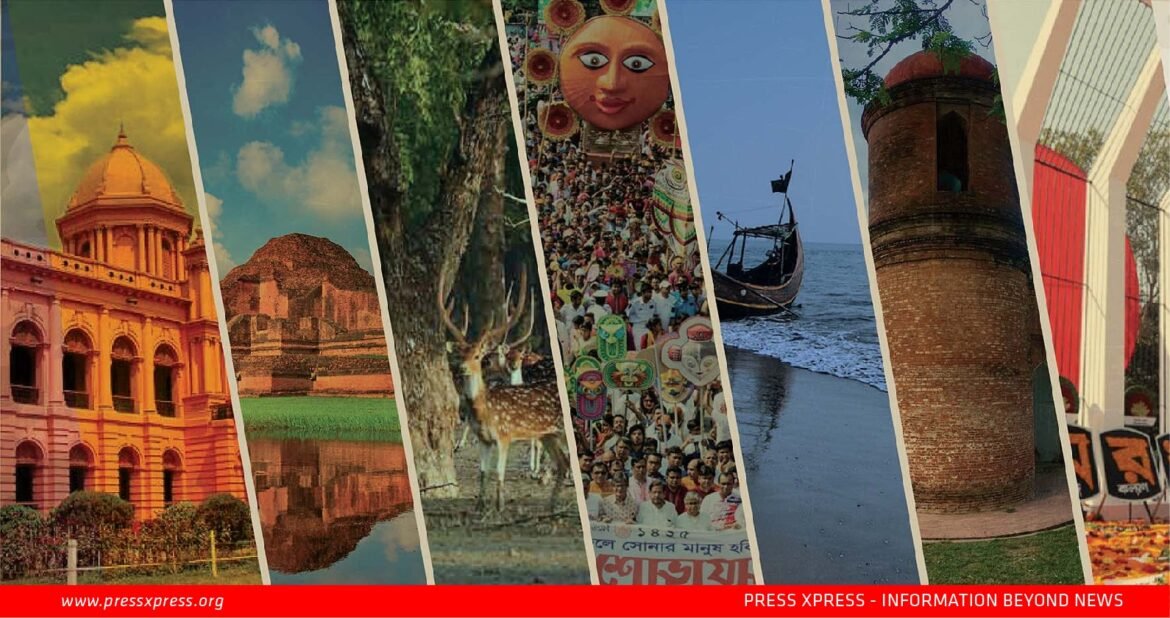Bangladesh’s heritage sites serve as vital links to our cultural roots and play a crucial role in shaping our national identity. Their preservation is not merely a matter of historical significance, but a responsibility we owe to future generations.
Bangladesh, nestled in South Asia, is a land of diverse wonders, celebrated not only for its natural beauty but also for its profound cultural heritage. This nation’s vibrant history and ethnic diversity have created a rich cultural mosaic that reflects the multifaceted identity of its people. From the remnants of ancient civilizations to awe-inspiring medieval architectural marvels, Bangladesh is a veritable treasure trove of cultural gems awaiting exploration.
The UNESCO World Heritage Sites scattered across Bangladesh stand as enduring testaments to this rich cultural legacy, forming vital bridges between the country’s storied past and its dynamic present. These sites are more than mere historical landmarks; they are living monuments that showcase Bangladesh’s cultural and historical significance while simultaneously driving tourism and contributing to economic growth.
Recognizing the importance of preserving and promoting this cultural wealth, the present government has launched numerous initiatives. These efforts aim not only to safeguard these irreplaceable treasures but also to ensure they continue to inspire and educate future generations.
How is Bangladesh working to preserve its UNESCO World Heritage Sites?
Strategies for Sustainable Heritage Conservation in Bangladesh
Addressing the challenges of heritage conservation in Bangladesh requires a comprehensive, collaborative approach involving governmental initiatives, public engagement, and innovative conservation strategies.
Governmental Action: Allocating Resources and Legal Protection
The government must prioritize heritage conservation by allocating sufficient funds and establishing a dedicated heritage fund. Tax incentives could incentivize private investment in restoration projects, while strengthened legal protections are essential to prevent encroachment and damage to heritage sites.
Controlled Urbanization and Climate Resilience
Implementing zoning regulations to safeguard heritage sites from urban encroachment is crucial. Establishing buffer zones around these sites can mitigate development impact, ensuring their long-term preservation. Additionally, investing in climate-resilient infrastructure and biodiversity protection measures is imperative to safeguard against natural disasters exacerbated by climate change.
Promoting Public Awareness and Engagement
Enhancing public awareness about the cultural and historical significance of heritage sites is paramount. Collaborative efforts involving government agencies, civil society, and the private sector can educate communities through public campaigns, educational programs, and tourism initiatives. This collective awareness fosters a sense of responsibility and pride in preserving Bangladesh’s cultural heritage for future generations.
However, the conservation of these sites faces significant challenges, demanding urgent attention and concerted efforts from all sectors.
Funding and Resources: A Critical Obstacle
One of the foremost challenges in conserving Bangladesh’s heritage sites is the acute shortage of funding and resources. With limited governmental allocation, many sites languish in disrepair, desperately needing restoration efforts that are hindered by financial constraints. Lack of adequate resources jeopardizes the preservation of these invaluable cultural landmarks.
Strategies for Sustainable Heritage Conservation in Bangladesh
Governmental Action: Allocating Resources and Legal Protection
The government must prioritize heritage conservation by allocating sufficient funds and establishing a dedicated heritage fund. Tax incentives could incentivize private investment in restoration projects, while strengthened legal protections are essential to prevent encroachment and damage to heritage sites.
Controlled Urbanization and Climate Resilience
Implementing zoning regulations to safeguard heritage sites from urban encroachment is crucial. Establishing buffer zones around these sites can mitigate development impact, ensuring their long-term preservation. Additionally, investing in climate-resilient infrastructure and biodiversity protection measures is imperative to safeguard against natural disasters exacerbated by climate change.
Promoting Public Awareness and Engagement
Enhancing public awareness about the cultural and historical significance of heritage sites is paramount. Collaborative efforts involving government agencies, civil society, and the private sector can educate communities through public campaigns, educational programs, and tourism initiatives. This collective awareness fosters a sense of responsibility and pride in preserving Bangladesh’s cultural heritage for future generations.
UNESCO World Heritage Sites
Bangladesh is home to several UNESCO World Heritage Sites that hold immense historic significance. The Sundarbans, the largest mangrove forest in the world, is not only a haven for biodiversity but also plays a crucial role in the ecological balance of the region.
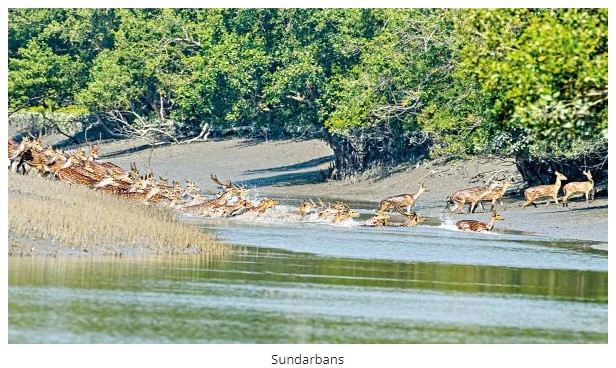
The Sundarbans: A Unique Natural Wonder
The Sundarbans, located in the southwestern part of Bangladesh in the Khulna region, stands as a testament to nature’s grandeur. Recognized as a UNESCO World Heritage Site since 1987, it holds the distinction of being the world’s largest mangrove forest. This vast ecosystem spans approximately 10,000 square kilometers, showcasing an unparalleled richness in biodiversity.
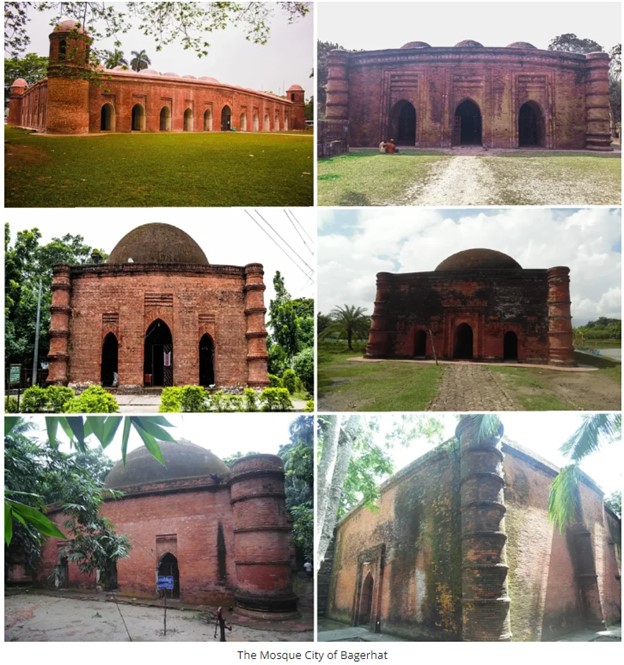
The Mosque City of Bagerhat:
The Mosque City of Bagerhat, another UNESCO World Heritage Site, is a living example of medieval Islamic architecture. Founded in the 15th century by a Turkish general, Khan Jahan Ali, the city’s mosques, including the famous Sixty Dome Mosque, showcase intricate terracotta ornamentation and architectural details that mesmerize visitors.
The Ruins of the Buddhist Vihara at Paharpur:
The Ruins of the Buddhist Vihara at Paharpur is yet another UNESCO World Heritage Site that holds great historic significance. Dating back to the 8th century, these ruins are evidence of the thriving Buddhist civilization that once flourished in this region.
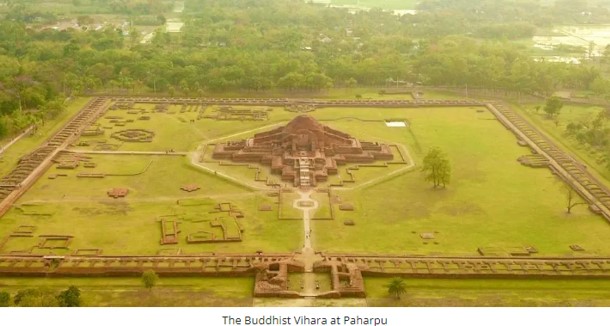
The Historic and Archaeological Ruins of Mahasthangarh:
The Historic and Archaeological Ruins of Mahasthangarh, located in the Bogura district of Bangladesh, are the remnants of an ancient city that dates back to the 3rd century BCE. The site provides a fascinating glimpse into the ancient civilizations that once thrived in this region. Excavations at Mahasthangarh have revealed ancient structures, artifacts, and relics, shedding light on the rich history of Bangladesh.
Bangladesh’s Others Historical Landmarks
- The Lalbagh Fort, a 17th-century Mughal structure standing by the Buriganga River, is one of the oldest architectural marvels in Bangladesh. Built by Muhammad Azam Shah, son of Emperor Aurangzeb, the fort features three main structures and is shrouded in mystery due to its underground tunnels.
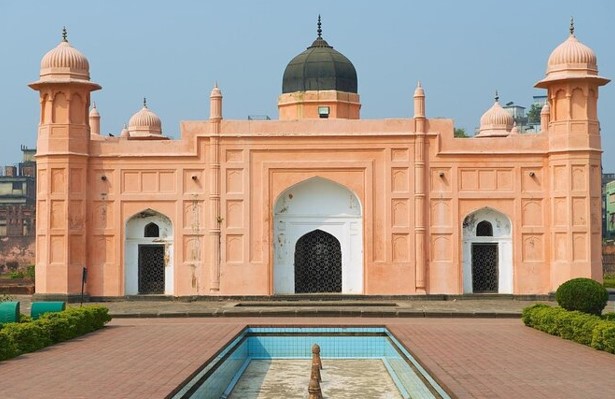
- Ahsan Manzil, originally a vacation house for a Zamindar, evolved through various ownerships before becoming a museum. The palace, divided into two sections including the entertainment-focused Rangmahal, now stands as a testament to Bangladesh’s colonial past.

- In Sonargaon, Panam City preserves ancient Mughal architecture and British colonial monuments across a 20km area, offering a glimpse into the region’s historical significance.
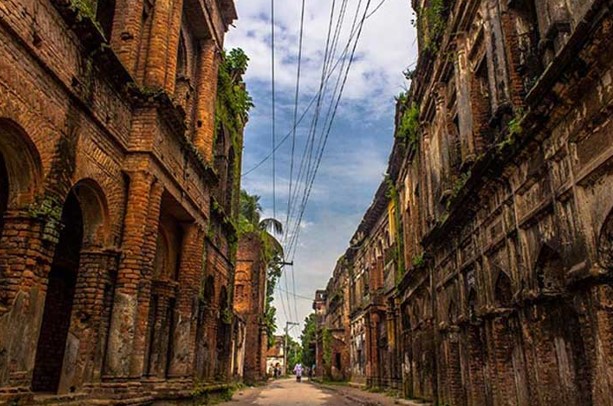
- The Shat Gambuj Masjid, or Sixty Dome Mosque, in Bagerhat is Bangladesh’s largest mosque and a UNESCO World Heritage Site. Built in the 15th century, it features impressive architecture with 77 domes and 60 stone pillars.
- Mainamati, an extinct Buddhist religious site in Comilla, not only showcases ancient religious practices but also houses a colonial cemetery with thousands of graves from World War II.
- The Star Mosque, built in the 19th century and renovated in the 20th, is renowned for its distinctive star-shaped mosaic tiles.
- The Shaheed Minar, or Martyr Monument, stands as a powerful symbol of the 1952 Language Movement, commemorating those who sacrificed their lives for the recognition of Bengali as a state language.
- Varendra Research Museum: The Varendra Research Museum in Rajshahi is a repository of Bengali history and culture. It houses a diverse collection of artifacts, manuscripts, and artworks.
These landmarks collectively represent Bangladesh’s architectural evolution, spanning Mughal, colonial, and modern periods, and serve as enduring reminders of the country’s rich cultural and historical legacy.
Steps taken to protect cultural heritage in Bangladesh
As Bangladesh progresses towards graduating from least developed country (LDC) status, the protection of its cultural heritage has become a national priority. The government, led by Prime Minister Sheikh Hasina, has taken significant steps to safeguard heritage sites, but there is a growing recognition that more comprehensive efforts are needed.
In 2023, State Minister for Cultural Affairs KM Khalid highlighted Bangladesh’s commitment to cultural heritage preservation. The country has implemented a policy framework and constitutional provisions to protect its cultural legacy. Bangladesh has also ratified several UNESCO conventions and guidelines, demonstrating its alignment with international standards for heritage conservation.
The government’s initiatives include:
- Establishing cultural exchange agreements with 44 countries
- Prioritizing conservation projects
- Participating in regional initiatives like the Asian Initiative for Cultural Heritage Conservation
While progress has been made, challenges remain. The Department of Archaeology (DoA) faces criticism for its perceived lack of proactivity in restoring and preserving historical landmarks. There is a call for the DoA to adopt a more vigorous approach in fulfilling its mandate while maintaining the architectural integrity of these sites.

